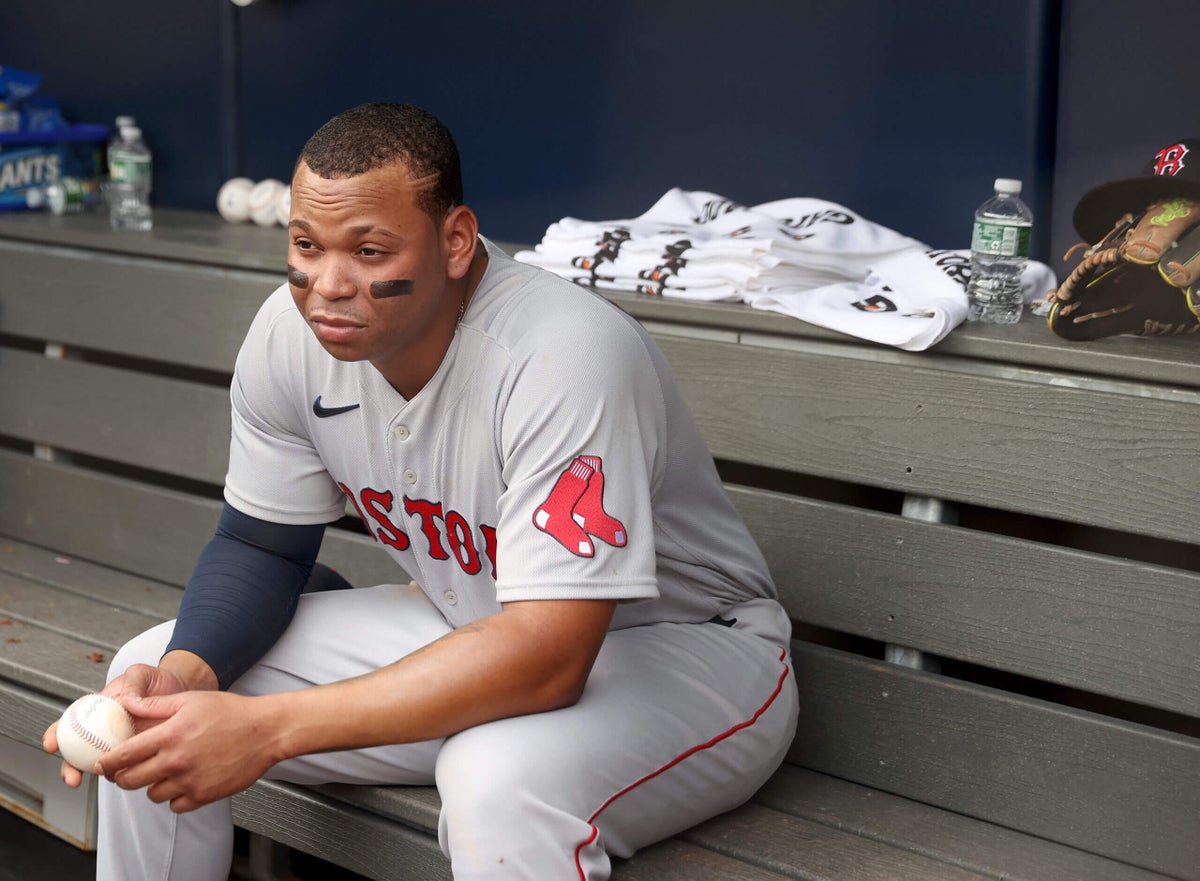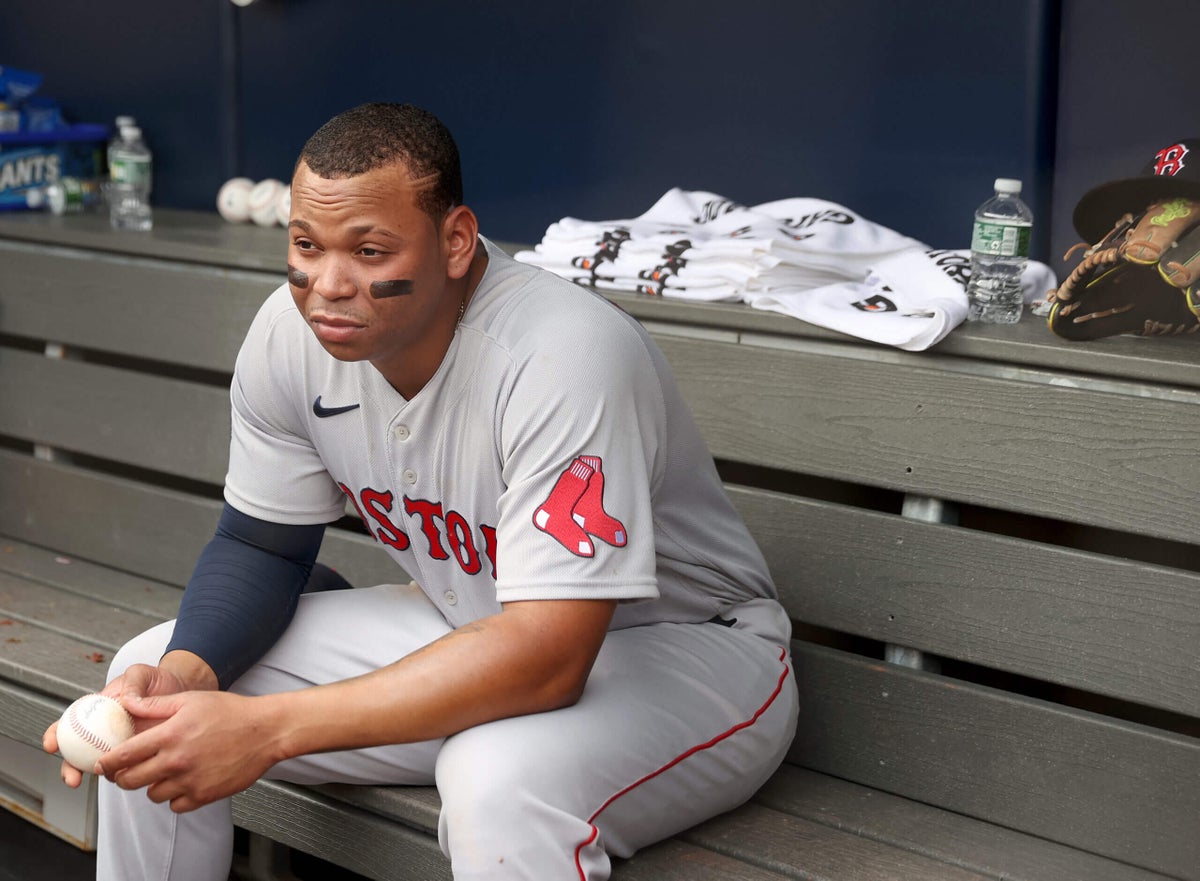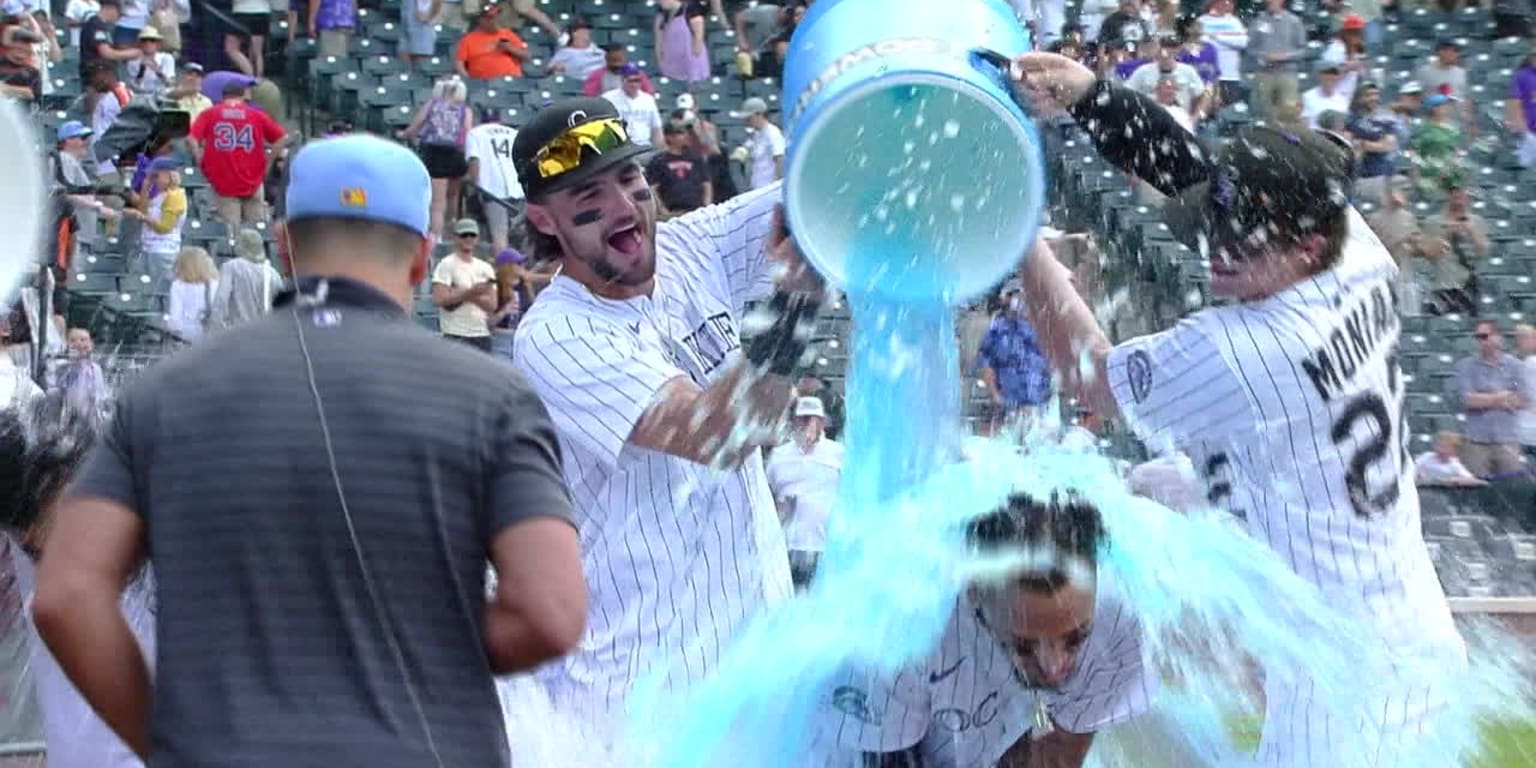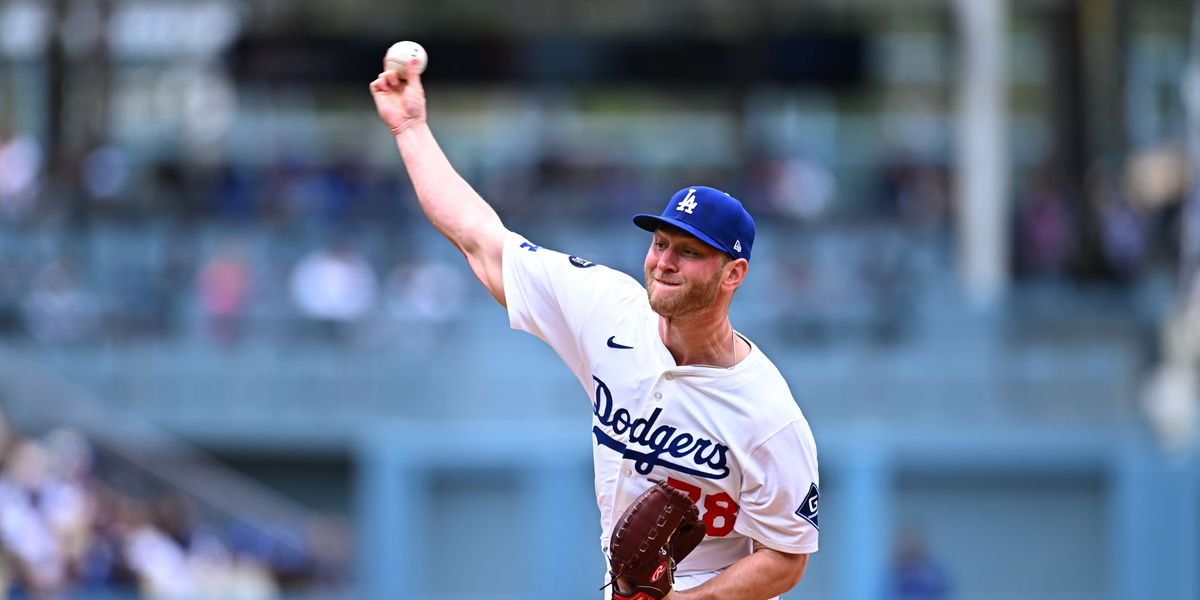
By Andy McCullough, Dennis Lin, Tim Britton and Eno Sarris
Giants get: 3B/DH Rafael Devers
Red Sox get: RHP Jordan Hicks, LHP Kyle Harrison, OF James Tibbs III, RHP Jose Bello
Andy McCullough: Here is the good news for the Giants: They are receiving the best player in the trade.
Rafael Devers, for all his flaws as a defender and for all of his apparent defensiveness about the general concept of changing positions, is a really good hitter. He entered Sunday’s games ranked 13th among qualified hitters in OPS (.894), 15th in weighted on-base average (.386) and 18th in wRC+ (145). In the four seasons before this one, he averaged 32 homers and 96 RBI with an .873 OPS. He is, for sure, one of the top 15 to 20 hitters in the sport, and he will help the lineup of a San Francisco club that has kept pace with the Dodgers in the early months of the season.
Advertisement
The question for the Giants, though, is if he will remain among that group during the subsequent nine years of his deal, during which San Francisco will owe him $250 million, in his age-29 to age-36 seasons. Anyone with easy access to an actuarial table can tell you how those things tend to go. He is not an adept defender, and, as this year has shown, he is not a particularly malleable one. If his bat slows, his value craters. Devers has shown no signs of slowing down, but nine years is a long time.
As for the Red Sox: Yeah, this deal probably won’t play well for a fanbase still scarred by the Mookie Betts trade. In some ways, this trade is part of the never-ending runoff from that disaster. The Red Sox paid Devers, a talented homegrown player, in part because they had dealt away Betts and lost Xander Bogaerts in free agency. Now Devers is gone. The sound you are hearing is howling from Burlington to Bangor.
To some rival executives, Devers’ contract looked so onerous that they believed Boston would need to add prospects to sweeten the deal and convince another team to acquire him. Instead, the Red Sox received some intriguing players in return. Harrison has yet to reach his potential in the majors. Hicks has been a mess in 2025. Tibbs was the No. 13 pick in last year’s draft. There is reason to believe in all of them, and reason to doubt all of them. Such is the nature of these things.
For the Red Sox, the ultimate value may be in getting out from under the deal. That won’t be an easy sell to their fans. Maybe they’ll do a better job selling it than they did selling first base to Devers.
Giants: C
Red Sox: B
Dennis Lin: The Giants haven’t had a 30-homer hitter since Barry Bonds crossed that threshold more than two decades ago. In Sunday’s stunning strike, they acquired a 28-year-old slugger with three 30-homer seasons in his career and enough offensive prowess to tilt the balance of power in the rugged National League West.
Advertisement
Offense, to this point, has kept San Francisco from being viewed as a legitimate contender to dethrone the Los Angeles Dodgers. The Giants trail the Dodgers by only one game in the standings, but the gap between the two lineups is considerably wider. The Dodgers continue to field the deepest offense in baseball. Giants hitters entered Sunday having produced at a rate 5 percent below league average, according to wRC+.
The addition of Devers might bump the Giants to merely average or just above average, but his new team already enjoyed a significant edge over its rivals in terms of pitching depth. The Dodgers can’t seem to keep anyone on the mound for long. The San Diego Padres, with Michael King and Yu Darvish still sidelined with uncertain timetables, are in a precarious position. The Arizona Diamondbacks already have suffered the year’s most crushing injury in the form of a torn UCL for Corbin Burnes. The Giants are surrendering a pair of competent arms to the Red Sox, but they still have plenty of pitching.
For Boston, Harrison and Hicks will bring talent and relatively inexpensive club control to a flawed pitching staff. Tibbs, according to The Athletic’s Keith Law, began this season as a borderline-top-100 prospect. The departure of Devers ends a months-long saga between a disgruntled star and a disillusioned franchise. In San Francisco, Devers figures to be asked to play first base, one of multiple assignments he balked at taking on in Boston. Even if he agrees, the Giants are assuming a sizable risk by taking on the remainder of his nine-figure contract.
Still, it’s an underwhelming return for one of the best hitters in baseball. The Giants, meanwhile, have sent an emphatic message to the rest of their division. The Dodgers are not invincible. The Padres are vulnerable. And now, San Francisco could be a real two-way threat.
It used to be that pre-July blockbusters were the domain of Padres president of baseball operations A.J. Preller. With one seismic move, Buster Posey has reminded everyone that he burns to win.
Advertisement
Giants: A-
Red Sox: C-
Tim Britton: It is hard to look at this trade and ignore the years-long context that would earn the Red Sox an immediate failing grade: They managed to turn Mookie Betts, Xander Bogaerts and Rafael Devers into Connor Wong and this package from San Francisco. However, if you’ve thought for a little while not just that Boston extended the wrong player of that trio — which we all do — but also that it extended a player it should not have extended, period, then this is a get-out-of-jail-free card reminiscent of a different major trade the Sox pulled off with the Dodgers: the one that unloaded Adrian González, Carl Crawford, Josh Beckett and Nick Punto in 2012.
But more than the actual return from the Giants, Boston’s grade here will depend on how swiftly and smartly it reinvests its new savings — the way it did ahead of 2013’s championship — and how well it’s evaluated its core of prospects just now reaching the majors. Excising Devers from the picture permits more flexibility to work Roman Anthony and Marcelo Mayer and Kristian Campbell all into one lineup (along with the more established Jarren Duran and Wilyer Abreu), provided those guys can bring any semblance of the production Devers has posted during his career with the Sox.
That’s the best-case scenario, and even then, it leaves the 2025 team in a poorer position. Devers is still one of the game’s best hitters, and perhaps an underrated one given the mediocre teams the Red Sox have fielded the last few seasons.
From San Francisco’s perspective, after years spent swinging and missing on big acquisitions, the Giants have decided they’re willing to overpay a bit. That was the feeling on Matt Chapman’s extension, on Willy Adames’ contract last winter, and on this deal for Devers now. But the plan is to win, not to win efficiently, and this deal makes the team a fair amount better moving forward. In our Urgency Index just last week, we pegged San Francisco as the team most in need of a bat; it acquired the biggest one that will move all summer, or so we presume.
Again, the cost here is less Harrison, Hicks, Tibbs and Bello than it is the money owed Devers into the 2030s. For the Giants’ sake, convincing the 28-year-old this offseason to put a glove back on and man first base would help ease that burden in the long run.
Advertisement
Giants: B
Red Sox: B-
Eno Sarris: A fair amount of how this deal will be appraised in the rear-view mirror depends on how the arms involved turn out. If they give Boston’s pitching staff what they need over the next couple of years, and the young Red Sox bats make them forget about losing a prodigious power producer like Devers, then history might be kind to the deal. But without that, it might be seen as another decision based mostly on money.
Jordan Hicks has been a great reliever, and at times, a pretty good starter. But what we’ve seen from him in the starting role is a velocity that starts out elite and wanes as the season goes on. And with his east-west profile — he throws a sinker and a sweeper as his best pitches — velocity becomes very important. The shapes on his pitches aren’t set up to create whiffs. If he’s there to bolster the pen, the velo will be there, and he could be an elite setup man. That’s not a role that will change the fate of this trade, though.
A young lefty starter with good velocity and a good fastball, though? That could change things. And Kyle Harrison does have a good fastball, as it’s a low-slot high spin efficiency pitch that can surprise batters at the top of the zone. It’s produced a .317 slugging percentage this year, as he’s come up from the minors with more velocity than he’s ever shown, and that’s a pretty good number for a four-seamer. The problem isn’t necessarily the four-seamer itself.
What happens with pitchers with this kind of slot and spin is that they have a hard time developing secondary pitches. The best comps for Harrison’s fastball come from Andrew Heaney, J.P. Sears, Sean Manaea and A.J. Puk — for all of them, their fastball is their best pitch. They’ve all gone through the gamut of secondary pitches, trying cutters, curves, slurves, sweepers, and change-ups, and they haven’t had much success. That’s not to say the pitchers themselves haven’t had success; there are some good seasons in there, it’s that they do so without having great off-speed pitches. That reduces their upside. The best idea for Harrison might be to keep the velocity up, and try to develop a bunch of okay secondary pitches. Heaney is throwing a bunch of different breaking balls this year, and it’s helping.
But that doesn’t sound like a pitcher that will change the way this deal is thought of in the future. At this point, it seems more likely the bats determine the trade grade in the future. Either Tibbs turns into something exciting, or Devers ages badly enough to make this deal a problem for the Giants. That’s the most likely math in this situation, in the end.
Giants: B+
Red Sox: C+
(Top photo: Elsa/Getty Images)



